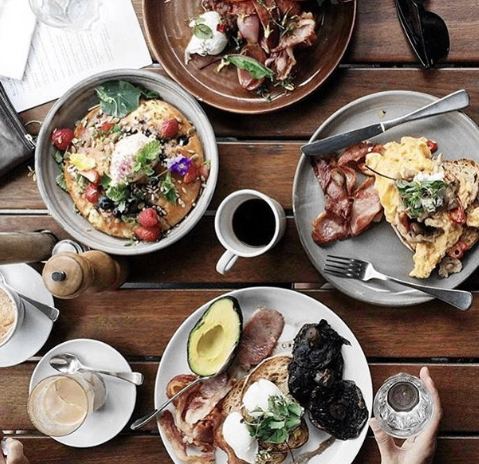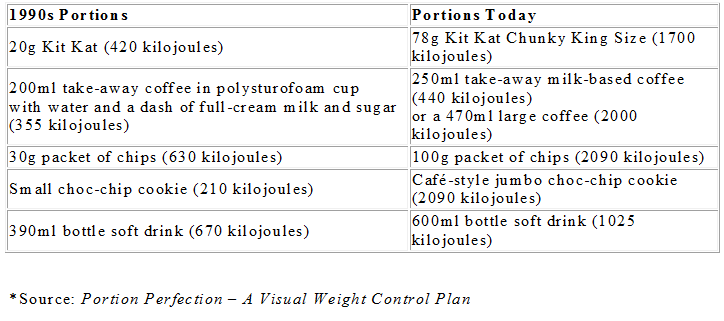
It’s hardly surprising that our understanding of how much we should be eating has become foggy in the past couple of decades. Packaged foods and restaurant and café meals are bigger than they’ve ever been before; feeding our notion that more on the plate represents value for money.
Take a look at my tips on how you can win the war against unfair portion sizes…
“It doesn’t cost restaurants very much to increase the portion size, but it does cost them a lot to use more expensive ingredients,” says dietitian Melanie McGrice.
“It’s also happening in supermarkets, with deals like ‘Buy one get one free’ or ‘10 per cent extra for the same price’. It can seem like good judgement at the time, but in the end, it’s more likely to add kilojoules to our diet and fat to our hips.”
The lack of industry guidelines around what constitutes an appropriate portion of packaged food also sets us up for confusion. It’s common for the nutritional panel of a 375 millilitre can of soft drink and a 600 millilitre bottle to claim they are both one serving.
“The manufacturers determine how many servings they say are in a package – often there will be something like 2.7 serves per package, but it might not even be a food that can be divided into 2.7,” says dietitian Amanda Clark, author of Portion Perfection – A Visual Weight Control Plan. “The food manufacturers usually calculate that in a very strategic way.”

How to win the war against unfair portion sizes:
One of the best ways to ensure you don’t accidentally blow out your portions is to eat regular meals and snacks. “If you’re famished before a meal, you’re more likely to eat bigger portions mindlessly,” McGrice says. Eating meals and snacks at the same time each day helps your body program the hunger hormone ghrelin. “Research shows that if you eat at the same time every day, ghrelin develops a routine and will start to be produced at the same time,” McGrice explains. “It’s like your body’s appetite clock and it will tell you when it’s time to have something to eat and give you a better idea of how much you need. When people eat small, regular meals throughout the day, they are less likely to become overly hungry and overeat.”
Most restaurants, pubs and cafés serve dishes well above the 1450 kilojoule recommended portion size, so Clark suggests generally eating half. “The average café meal is more like 2500 to 3000 kilojoules, so often just eating half of what’s on your plate pretty much gets you there,” she explains. A good way to do that is to serve up your portion onto a separate
plate. “If I get a big bowl of pasta, I will serve some of it up on a bread and butter plate, then push the rest away and fill up on a side salad,” McGrice says.
Planning your week’s meals and snacks before you do your grocery shopping is another great strategy for ensuring you fill up the vegetable quota of your lunch and dinner plates. “You want at least five cups of raw vegetables or two-and-a-half cups of cooked vegetables every day,” McGrice points out.
Once you develop good portion habits, it becomes second nature. “When you’ve trained your body to eat the correct portion sizes on a regular basis, overeating tends to make you feel really uncomfortable,” McGrice says. “And if you do have a special dinner on the cards, compensate for potentially larger portions by doing some exercise before you go.”
Read the full article at: http://www.fernwoodfitness.com.au/weight-loss—exercise/recipes—nutrition/all-nutrition-articles/how-to-win-the-war-on-super-sized-portions/
